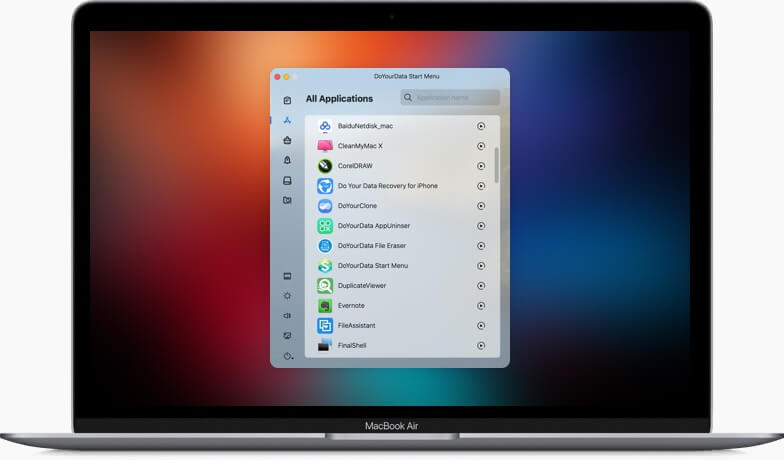Download Start Menu for Mac to add a Start Button to your Dock, so you'll be able to run what you need faster. How to force Windows 11 to use the classic Start Menu. To enable the Windows 10 Start Menu in Windows 11, you can either download a Registry file that can enable the feature for you or modify the. Customized Start Menu for Win 8/10. Some Windows 8/10 users might not get used to the new style of start menu. Start Menu 8 can help them change their system default start menu and bring back Win7 style start menu, and easily switch start icon at will.
Shut down your Mac. Press the power button and hold down Command-S as your Mac starts up. Release the keys when you see a black screen with white text on it. Now, you can run UNIX commands to troubleshoot your computer. How to maintain and protect your Mac. If you don’t already have CleanMyMac X on your Mac, you can download it for free here. Start Menu For Mac Download Mac Mac Start Menu I am looking for a start menu and taskbar for Mac OS X 10.10 (Yosemite) with as many following features as possible (approximately ordered by descending importance): Start menu: Multi-column application list (i.e.
On a Mac with Apple silicon

Turn on your Mac with Apple silicon and continue to press and hold the power button until you see the startup options window. From there you can start up from a different disk, start up in safe mode, use macOS Recovery, and more. Learn more about these options, including macOS Recovery.
On an Intel-based Mac
Mac Start Menu Download For Windows 7
To use any of these key combinations, press and hold the keys immediately after pressing the power button to turn on your Mac, or after your Mac begins to restart. Keep holding until the described behavior occurs.
- Command (⌘)-R: Start up from the built-in macOS Recovery system. Or use Option-Command-R or Shift-Option-Command-R to start up from macOS Recovery over the internet. macOS Recovery installs different versions of macOS, depending on the key combination you use. If your Mac is using a firmware password, you're prompted to enter the password.
- Option (⌥) or Alt: Start up to Startup Manager, which allows you to choose other available startup disks or volumes. If your Mac is using a firmware password, you're prompted to enter the password.
- Option-Command-P-R:Reset NVRAM or PRAM. If your Mac is using a firmware password, it ignores this key combination or starts up from macOS Recovery.
- Shift (⇧): Start up in safe mode. Disabled when using a firmware password.
- D: Start up to the Apple Diagnostics utility. Or use Option-Dto start up to this utility over the internet. Disabled when using a firmware password.
- N: Start up from a NetBoot server, if your Mac supports network startup volumes. To use the default boot image on the server, press and hold Option-N instead. Disabled when using a firmware password.
- Command-S: Start up in single-user mode. Disabled in macOS Mojave or later, or when using a firmware password.
- T: Start up in target disk mode. Disabled when using a firmware password.
- Command-V: Start up in verbose mode. Disabled when using a firmware password.
- Eject (⏏) or F12 or mouse button or trackpad button: Eject removable media, such as an optical disc. Disabled when using a firmware password.
If a key combination doesn't work at startup, one of these solutions might help:
Start Menu On Mac Computer
- Press and hold all keys in the combination together, not one at a time.
- Shut down your Mac. Then press the power button to turn on your Mac. Then press and hold the keys as your Mac starts up. You might need to wait a few seconds before pressing the keys, to give your Mac more time to recognize the keyboard as it starts up. Some keyboards have a light that flashes briefly at startup, indicating that the keyboard is recognized and ready for use.
- If you're using a wireless keyboard, plug it into your Mac, if possible. Or use your built-in keyboard or a wired keyboard. If you're using a keyboard made for a PC, such as a keyboard with a Windows logo, try a keyboard made for Mac.
- If you're using Boot Camp to start up from Microsoft Windows, set Startup Disk preferences to start up from macOS instead. Then shut down or restart and try again.